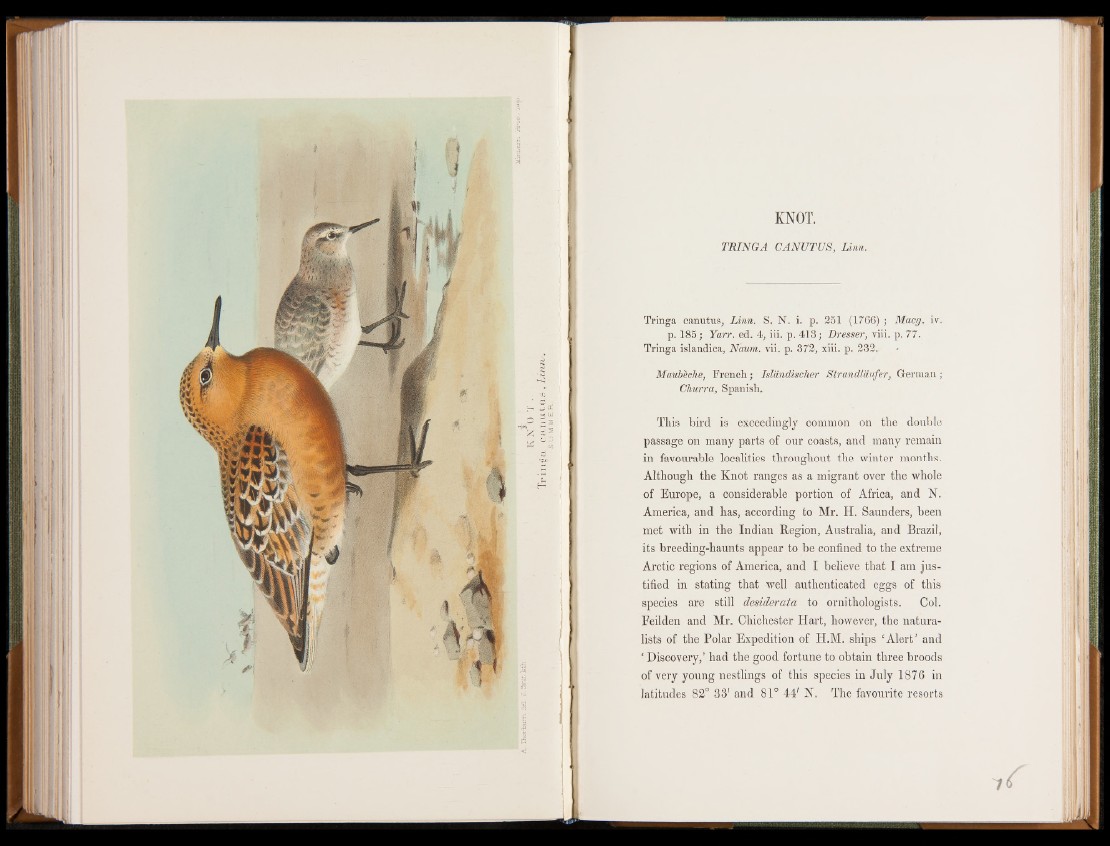
l iving a c a n u ttis IfLuens.
KNOT.
TRINGA CANUTUS, Linn.
Tringa canutus, Linn. S. N. i. p. 251 (1766) ; Macg. iv.
p. 185; Yarr. ed. 4, iii. p. 413; Dresser, viii. p. 77.
Tringa islandica, Naum. yii. p. 372, xiii. p. 232.
Maubeche, French; Isländischer Strandläufer, German ;
Churra, Spanish,
This bird is exceedingly common on the double
passage on many parts of our coasts, and many remain
in favourable localities throughout the winter months.
Although the Knot ranges as a migrant over the whole
of Europe, a considerable portion of Africa, and N.
America, and has, according to Mr. H. Saunders, been
met with in the Indian Region, Australia, and Brazil,
its breeding-haunts appear to be confined to the extreme
Arctic regions of America, and I believe that I am justified
in stating that well authenticated eggs of this
species are still desiderata to ornithologists. Col.
Eeilden and Mr. Chichester Hart, however, the naturalists
of the Polar Expedition of H.M. ships ‘Alert’ and
‘ Discovery,’ had the good fortune to obtain three broods
of very young nestlings of this species in July 1876 in
latitudes 82° 33' and 81° 44' N. The favourite resorts
1 < r